Special Report
What Valentine’s Day Looked Like Hundreds of Years Ago
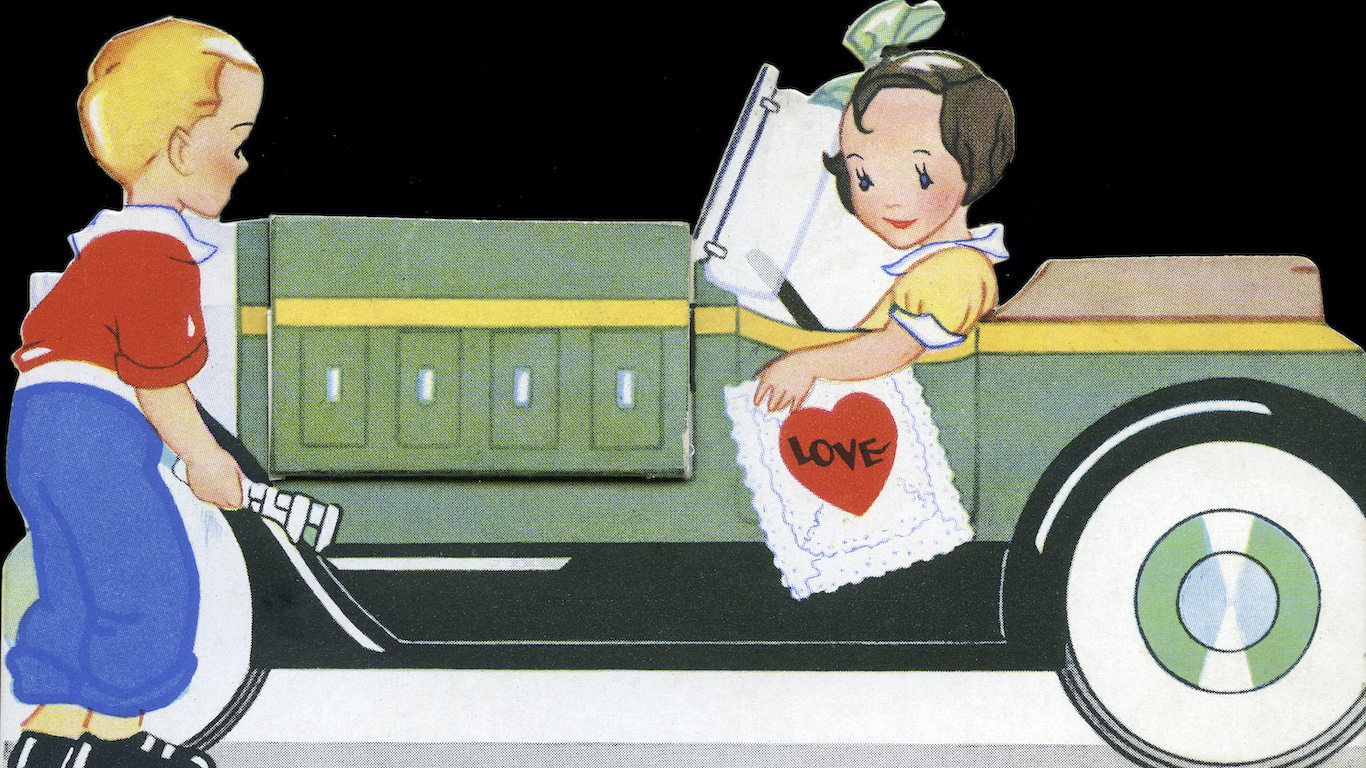
Published:
Last Updated:

Some things have changed about Valentine’s Day — online cards, makeover segments on morning TV shows, romantic getaways, as well as cards for dogs, co-workers, relatives, friends, and same-sex couples.
But some things have not. We still go out to eat for a romantic dinner, and give flowers, gifts, and candy. And we do so more than ever. This year, romance is expected to bloom to the tune of $27.4 billion, up from $20.7 billion, or 32%, from a year ago, according to the National Retail Federation. The NRF said consumers plan to spend an average of $196.31, an increase of 21% from $161.96 a year ago.
As Valentine’s Day approaches, 24/7 Tempo is taking the opportunity to see what Valentine’s Day looked like in the past by reviewing articles from media sources such as Time, resource sites such as smithsonianmag.com, as well as stories published on the website of greeting card company Hallmark.
Click here to see what Valentine’s Day looked like in the past
The origins of Valentine’s Day go back to ancient Rome when Romans celebrated the spring festival of Lupercalia on Feb. 15. The day later became associated with martyred Christians who were named Valentine.
The oldest Valentine is attributed to the Duke of Orleans, who in 1415 wrote a poem to his wife while he was held prisoner in London after the French defeat at the Battle of Agincourt.
English poet Geoffrey Chaucer, whose works “Parlement of Foules” and “The Complaint of Mars” helped foster our notions of romance, linked Feb. 14 to “amour” because that was when birds began mating. The Bard himself, William Shakespeare, alluded to Valentine’s Day in “A Midsummer Night’s Dream” and in “Hamlet.”
Sending Valentine’s Day cards began in the early 19th century, and the giving of flowers, chocolate, and other gifts became more widespread in the 19th century, too. Looking to buy chocolate this Valentine’s Day? Here are America’s 30 Best Chocolate Shops.
To find out what Valentine’s Day looked like in the past, 24/7 Tempo reviewed articles from media sources, resource sites, as well as stories published on the website of greeting card company Hallmark.
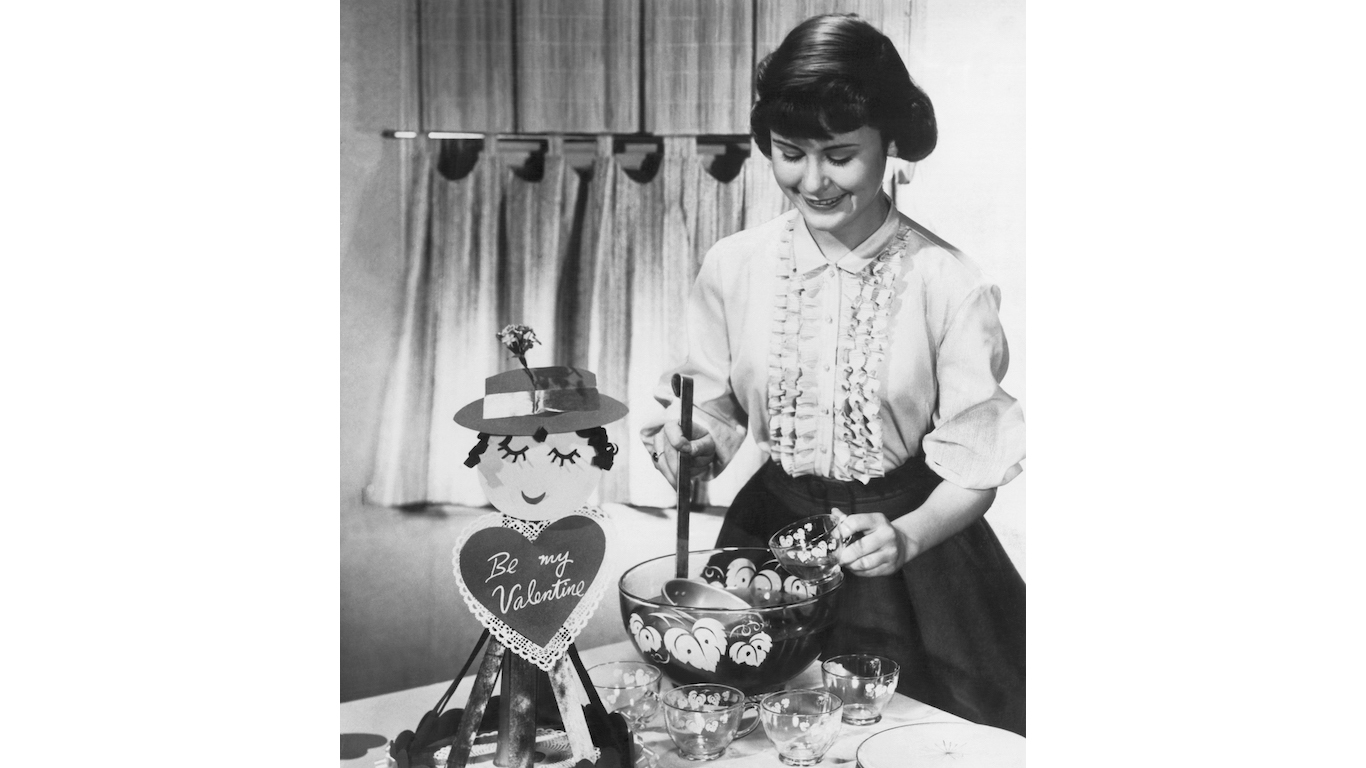
Valentine Parties
> Time: Late 17th century
In late 17th-century England, Londoners would hold parties the night before Valentine’s Day where men would select their Valentine and claim her the next day. The rite was treated as more mirthful than as a serious selection for a mate.
[in-text-ad]

Valentine Lotteries
> Time: Late 17th century
An article in an English newspaper in the mid-19th century referenced a late 17th-century poem in which men and women would participate in drawing lots to select their Valentines.
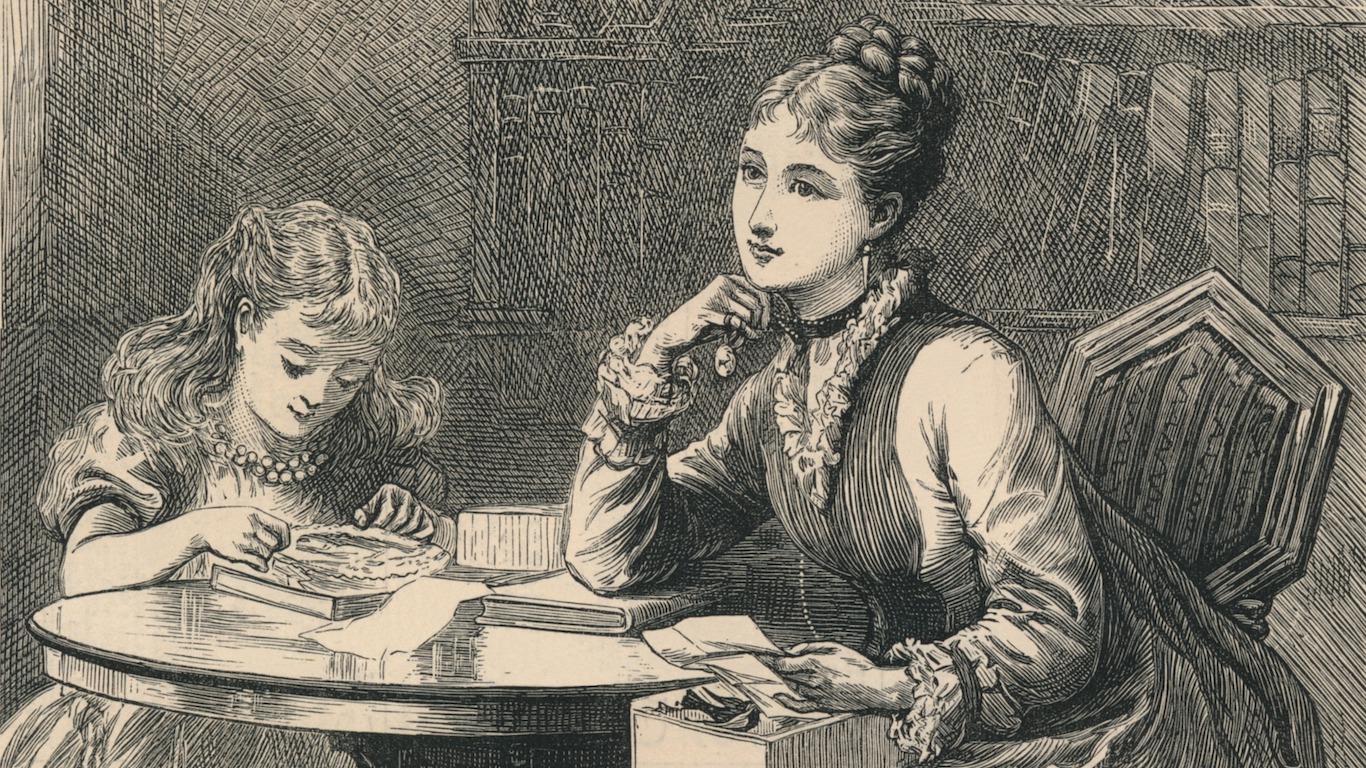
Valentine Gifts
> Time: Late 17th century
Noted English diarist Samuel Pepys wrote often about Valentine’s Day rituals in 17th-century England. As part of the celebration, women were given small gifts. Pepys wrote about buying gloves for his wife.
Valentine Flowers
> Time: Late 17th century
You’ve heard the expression “Say it with flowers.” It may have originated in the late 17th century when King Charles II of Sweden went to Persia and saw how the Persians expressed themselves through flowers. Giving a yellow carnation to someone meant that they had disappointed you. A purple hyacinth expressed an apology. Red roses are still associated with profound love.
[in-text-ad-2]

Homemade Cards
> Time: Early 19th century
The first Valentine’s Day cards were homemade and began circulating in the early part of the 19th century in England and later in the United States. The cards were decorated with lace, hearts, and festooned with ribbons.

Anonymous Cards
> Time: 1830s
As Americans began to use the postal service more frequently in the early 19th century (stamps were first used in 1847), Valentine’s Day cards began to be sent anonymously through the mail. And because the cards were anonymous, the sender might compose prose that could be salacious.
[in-text-ad]

First Commercial Cards
> Time: 1840s
The first commercially made Valentine’s Day cards started to appear in England in the 1830s and then in the United States the following decade.
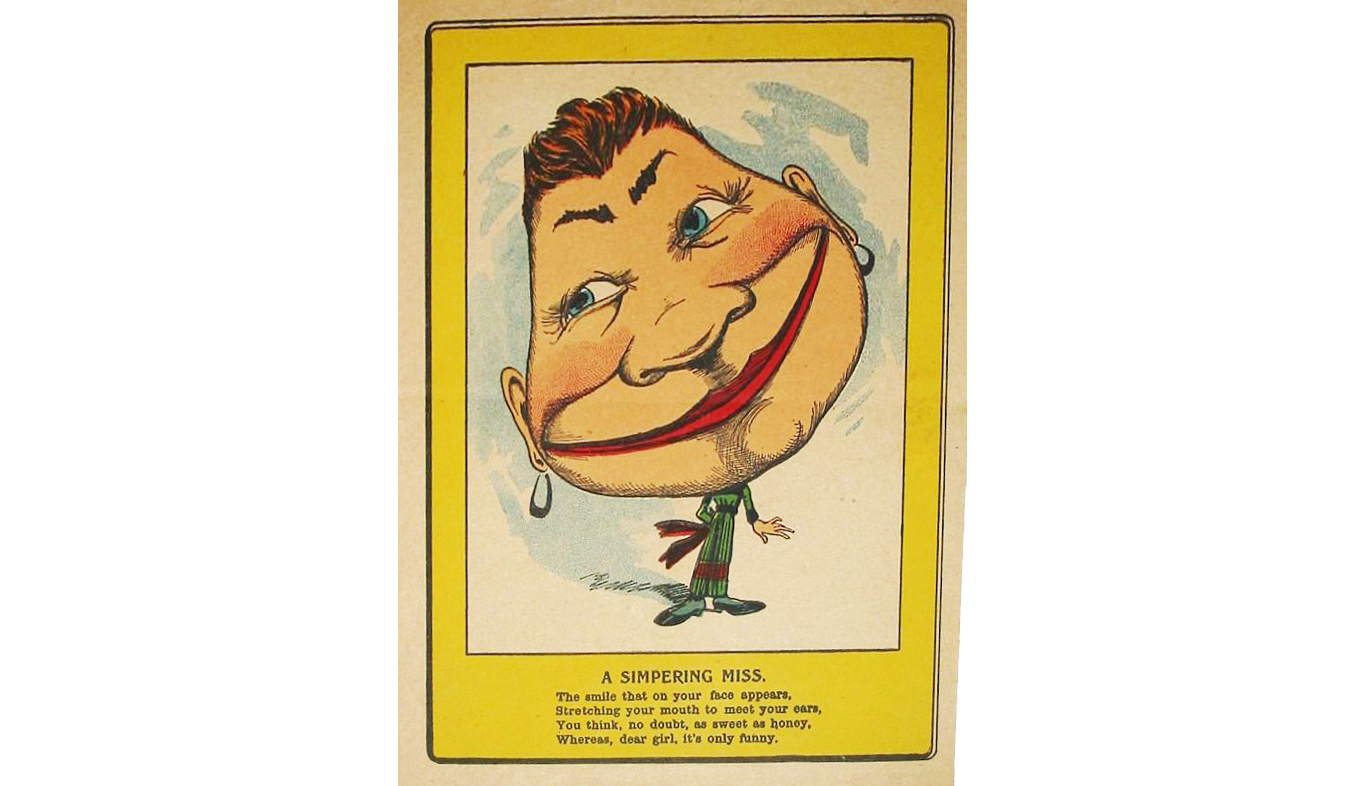
‘Vinegar Valentines’
> Time: 1840s
Valentine’s Day card giving can be a bittersweet experience. An early version of trolling was the sending of what are called “Vinegar Valentines” — mean-spirited and hurtful sentiments sent to people. The cards were first sent during the 1840s and gained popularity in the following decades. Some of the contents could be teasing and mocking about one’s physical appearance. And some actually suggested that the reader commit suicide.
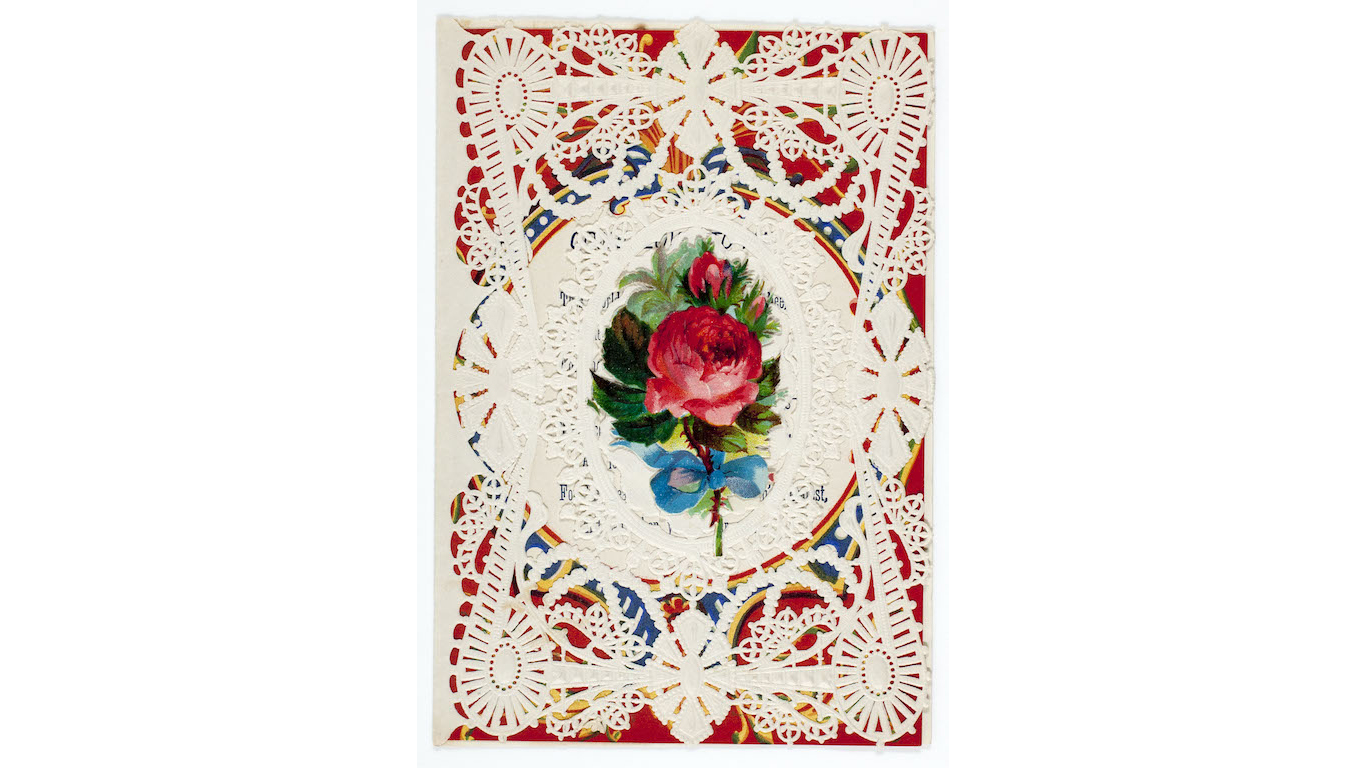
Mother of the American Valentine
> Time: 1840s
Massachusetts native Esther Howland is credited with launching the commercial Valentine’s Day card industry. Howland got the idea after receiving a Valentine’s card when she graduated from Mount Holyoke College in 1847. She called her venture New England Valentine Co.
[in-text-ad-2]

Political Valentines
> Time: 1850s
Valentine’s Day cards diversified from purely romantic missives to more political, funny, and satirical sentiments in the mid-part of the 19th century. This tradition continued and these days President Donald J. Trump and Russian President Vladimir Putin are popular subjects of political-themed Valentine’s Day cards.

Heart-Shaped Boxes of Chocolates
> Time: 1860s
The National Retail Federation estimates that 52% of Valentine’s Day gift-givers will spend $2.4 billion on candy, and the overwhelming majority of that will be on chocolate. Venerable British chocolate company Cadbury produced the first heart-shaped box of chocolates in the 1860s. Chocolate has been associated with “amour” since at least the time of Aztec Montezuma II, who consumed huge quantities of liquid cocoa beans in the late 15th and early 16th centuries because it was believed that chocolate boosted virility.
[in-text-ad]

Interest in Valentine’s Day history
> Time: 19th century
Newspapers began to publish stories in the 19th century about the origins of the holiday as well as stories lamenting the decline of romance. Commercial card companies started buying advertisements for Valentine’s Day cards around this time.
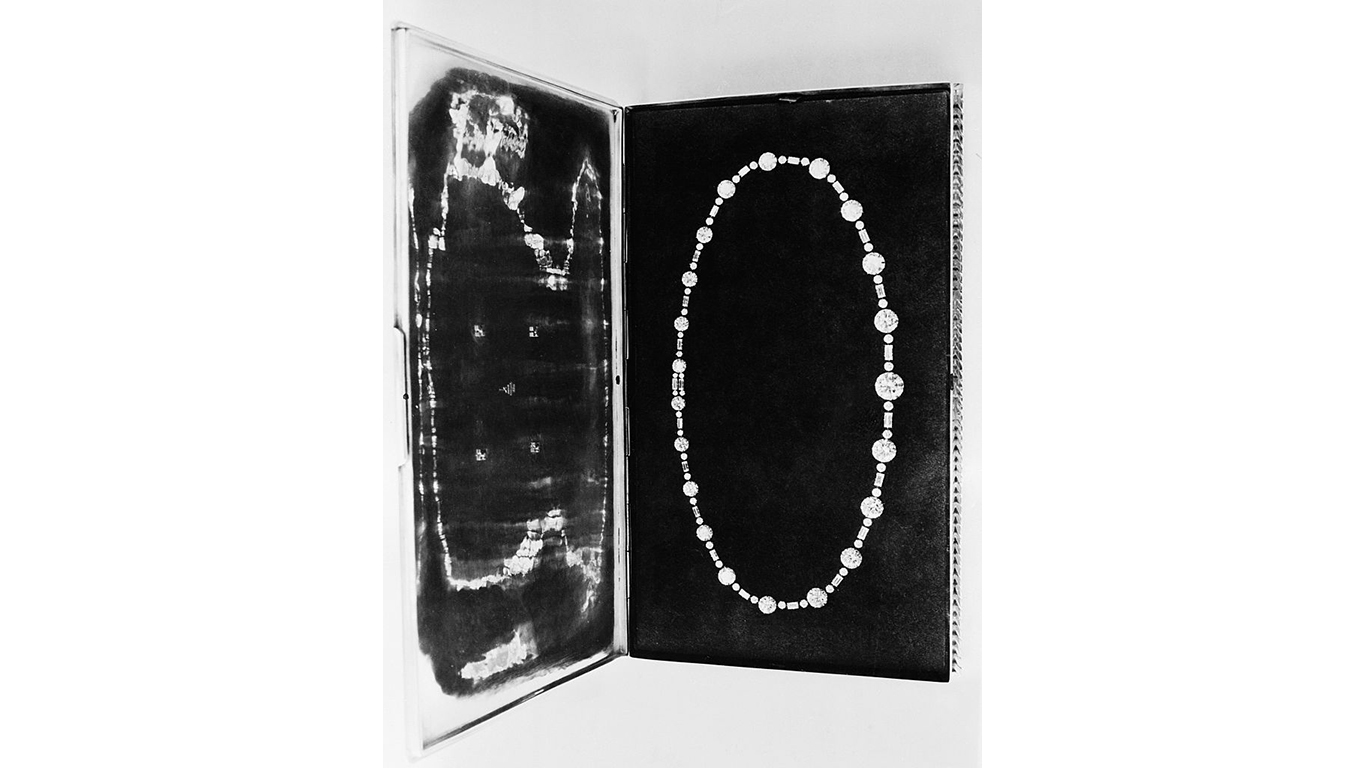
Jewelry
> Time: Late 19th century
As people’s incomes rose in the late 19th century, they sought to express their affection by giving jewelry on Valentine’s Day. Some people thought that this was too much of a capitalist intrusion on a holiday meant for love.
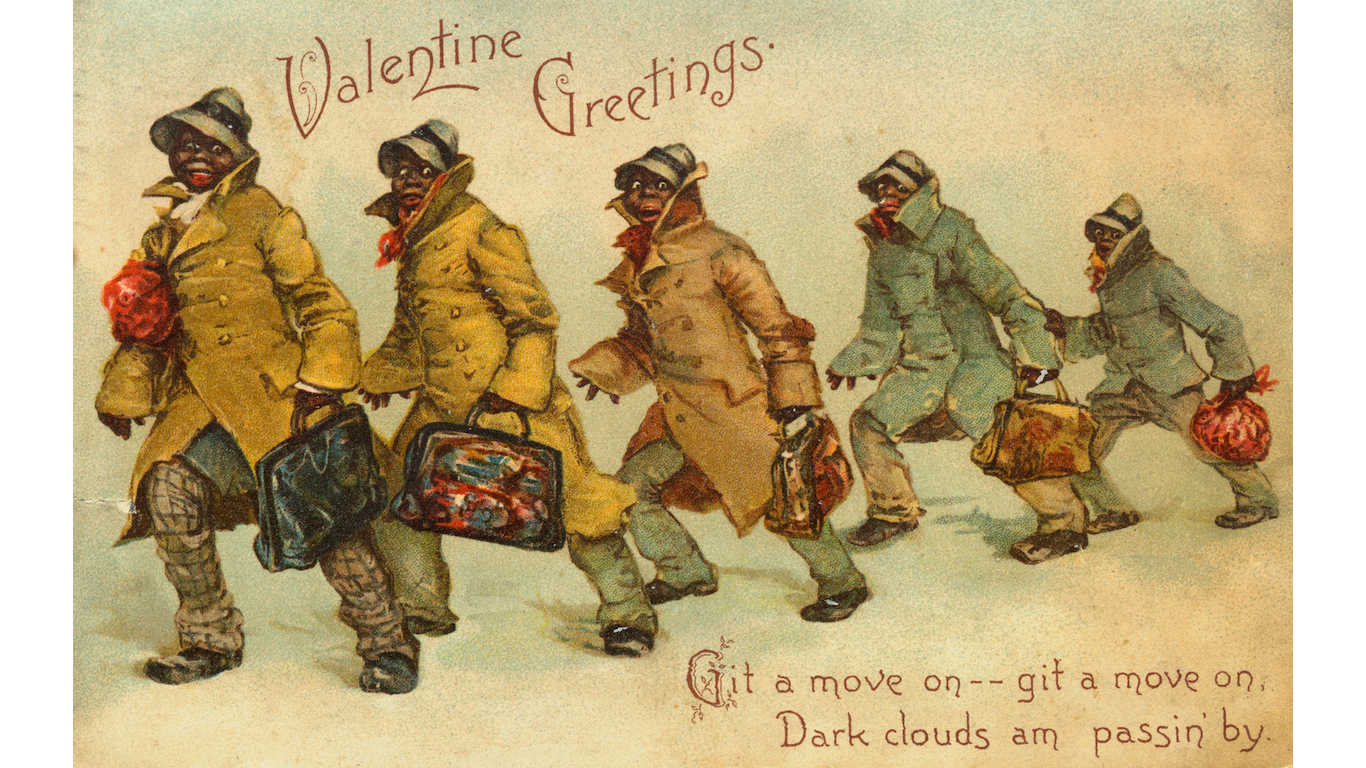
Racist Valentine’s Day cards
> Time: Late 19th century
Valentine’s Day cards depicting racial stereotypes were not uncommon in the late 19th century and early 20th centuries. These cards depicted caricatures of African-Americans speaking in ignorant dialects. Blackface depictions on these cards were also common. Stores were not bashful in displaying these Valentines with cardboard cutouts of racially stereotyped children.
[in-text-ad-2]
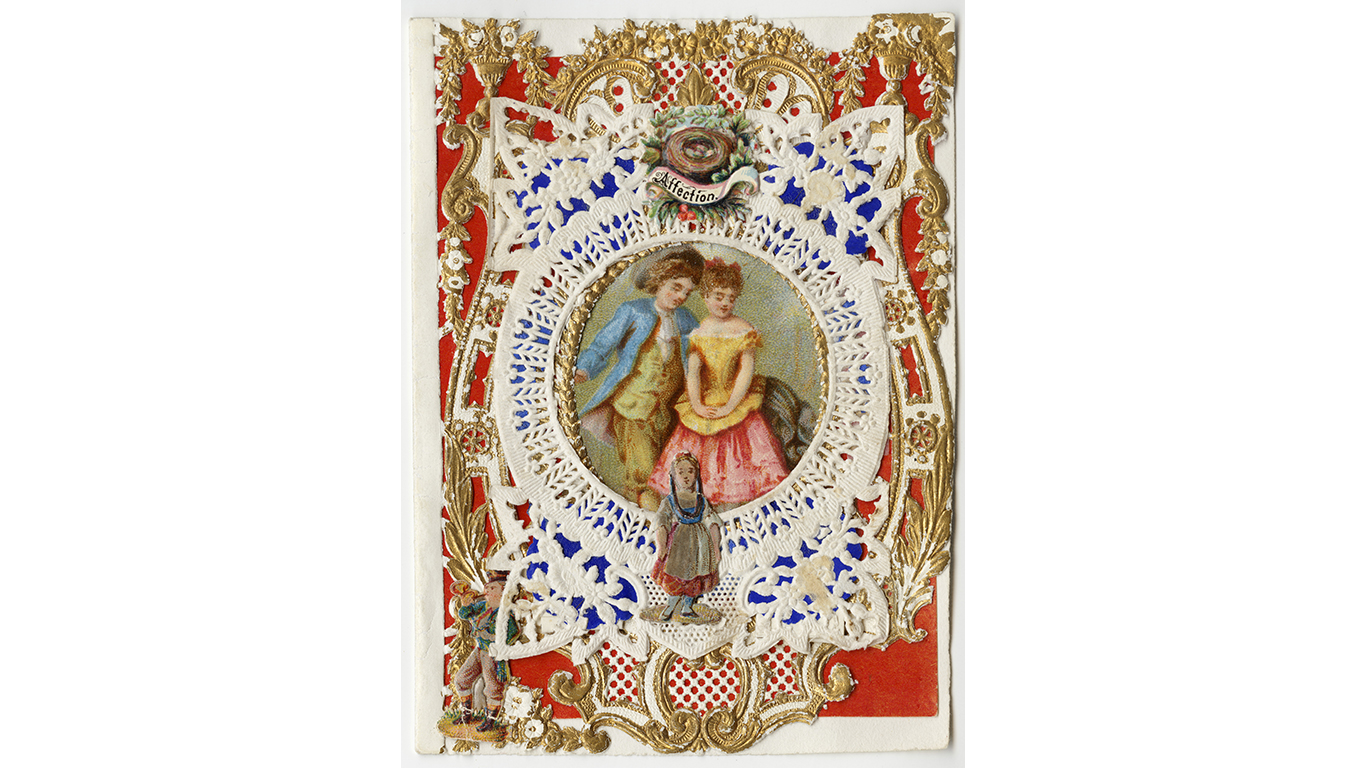
Elaborately decorated cards
> Time: 1890s
By the late 19th century, commercially made cards featured ribbons, glazed paper, feathers, beads and even mirrors. They were expensive, too, some costing as much as $25.
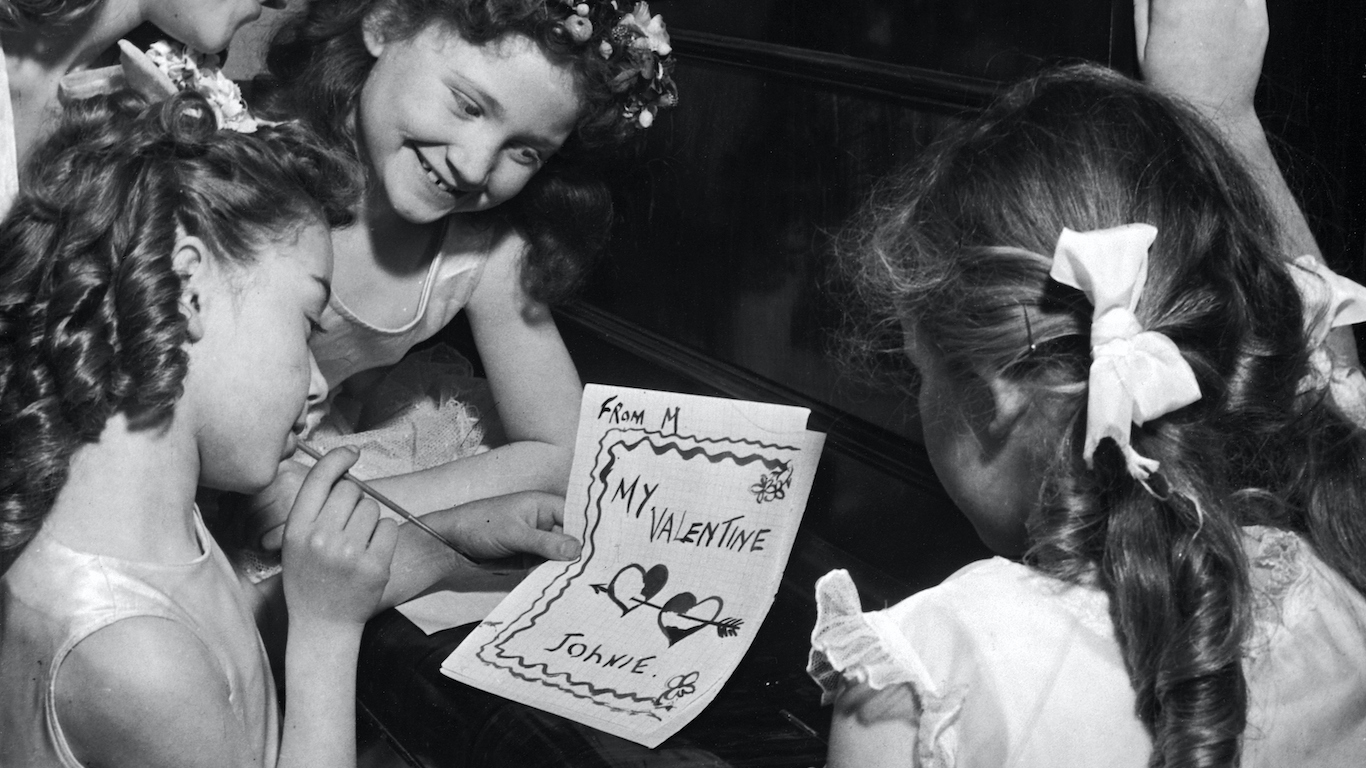
Card swaps at school
> Time: 1900s
Didn’t get the Valentine’s Day card from the one you hoped for? Grade-school students solved that problem by swapping cards, which goes back to the early 20th century.
[in-text-ad]

Simple card designs
> Time: 1900s
Card designs became more simple in the 20th century, with less emphasis on fancier features such as feathers and beads. The cards also included innovations like pull tabs.

Hershey’s Kiss chocolates
> Time: 1907
Hershey’s introduced the chocolate kisses in 1907 and they have been closely associated with Valentine’s Day ever since. Hershey’s founder Milton Hershey hit on the idea of wrapping the confection in tin foil, believing people wanted to carry the treats around with them. The company began wrapping them in pink and red foil in 1986.
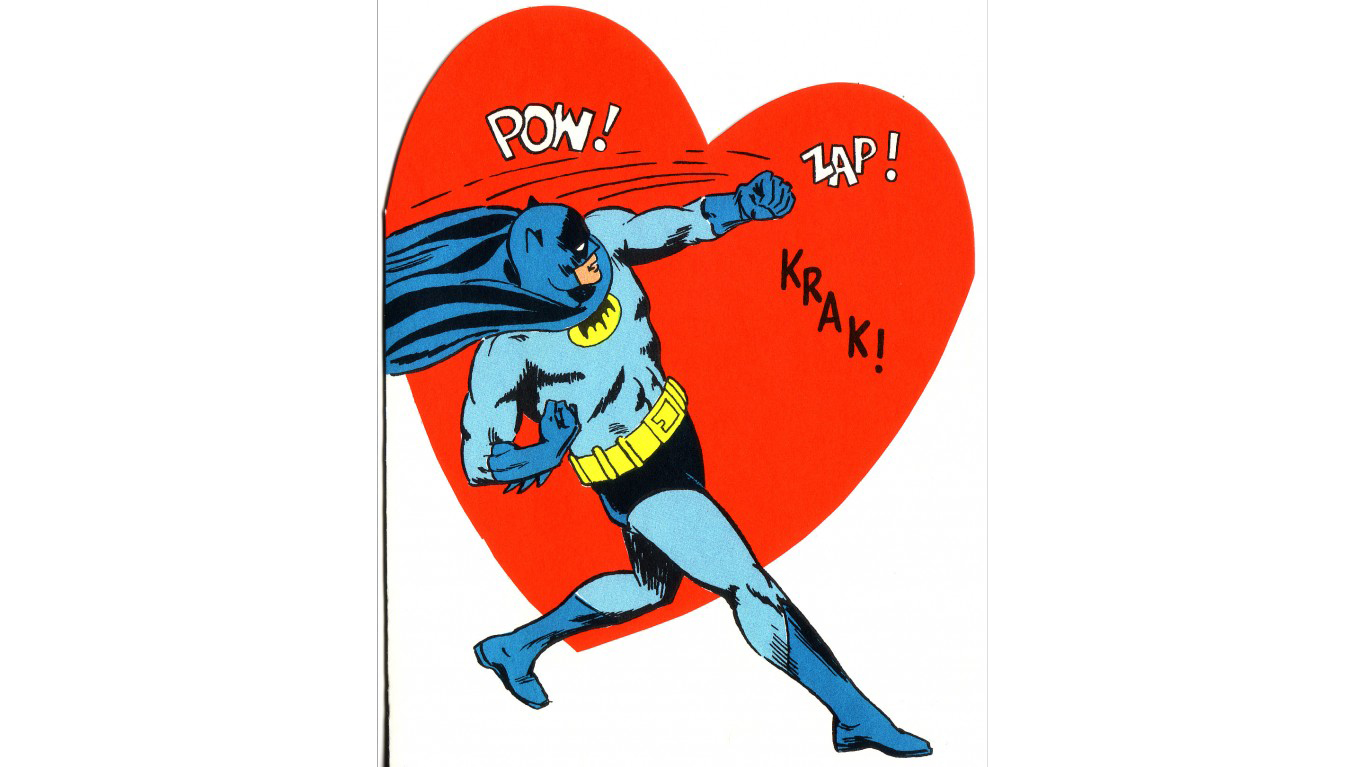
Hallmark Valentines
> Time: 1913
Greeting card company Hallmark first offered Valentine’s Day cards in 1913 and began mass-producing them three years later.
[in-text-ad-2]
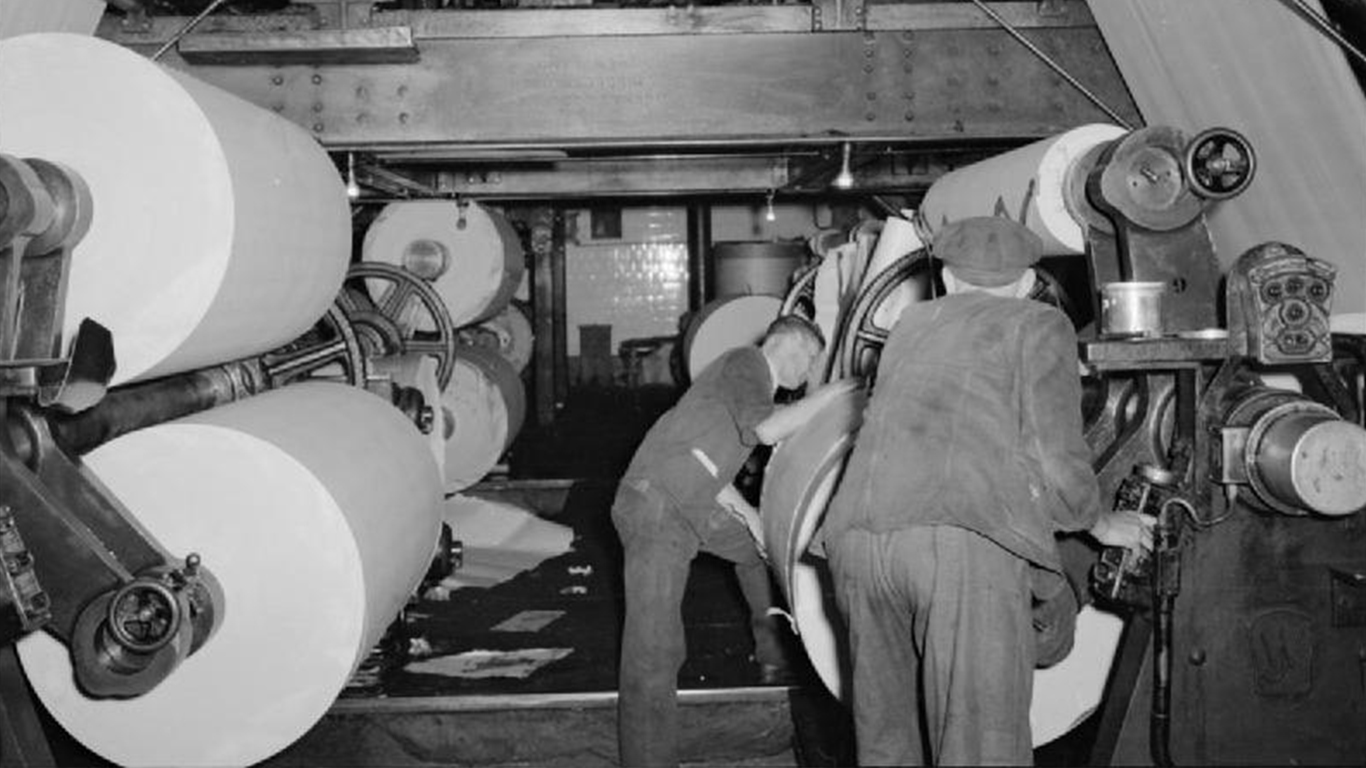
Newspaper messages
> Time: 20th century
Newspapers such as the English daily The Guardian began publishing messages in their personal columns on Feb. 14. People were able to place personal ads — a message to their Valentine — in the paper.
Thank you for reading! Have some feedback for us?
Contact the 24/7 Wall St. editorial team.